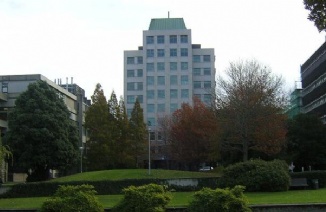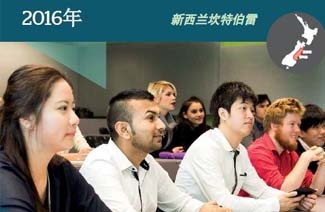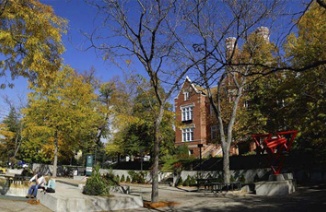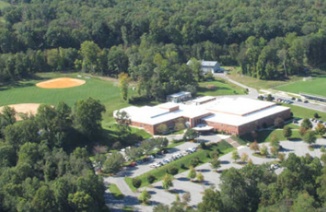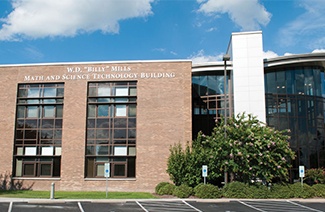雅思阅读考前练习:Making Everydrop Count!为了便于大家更好的对雅思阅读进行有效的练习,
点击》》
Making Everydrop Count
A The history of human civilisation is entwined with the history of the ways we have learned to manipulate water resources. As towns gradually expanded, water was brought from increasingly remote sources, leading to sophisticated engineering efforts such as dams and aqueducts. At the height of the Roman Empire, nine major systems, with an innovative layout of pipes and well-built sewers, supplied the occupants of Rome with as much water per person as is provided in many parts of the industrial world today.
B During the industrial revolution and population explosion of the 19th and 20th centuries, the demand for water rose dramatically. Unprecedented construction of tens of thousands of monumental engineering projects designed to control floods, protect clean water supplies, and provide water for irrigation and hydropower brought great benefits to hundreds of millions of people. Food production has kept pace with soaring populations mainly because of the expansion of artificial irrigation systems that make possible the growth of 40 % of the world’s food. Nearly one fifth of all the electricity generated worldwide is produced by turbines spun by the power of falling water.
C Yet there is a dark side to this picture: despite our progress, half of the world’s population still suffers, with water services inferior to those available to the ancient Greeks and Romans. As the United Nations report on access to water reiterated in November 2001, more than one billion people lack access to clean drinking water; some two and a half billion do not have adequate sanitation services. Preventable water-related diseases kill an estimated 10,000 to 20,000 children every day, and the latest evidence suggests that we are falling behind in efforts to solve these problems.
D The consequences of our water policies extend beyond jeopardising human health. Tens of millions of people have been forced to move from their homes — often with little warning or compensation — to make way for the reservoirs behind dams. More than 20 % of all freshwater fish species are now threatened or endangered because dams and water withdrawals have destroyed the free-flowing river ecosystems where they thrive. Certain irrigation practices degrade soil quality and reduce agricultural productivity. Groundwater aquifers* are being pumped down faster than they are naturally replenished in parts of India, China, the USA and elsewhere. And disputes over shared water resources have led to violence and continue to raise local, national and even international tensions.
* underground stores of water
E At the outset of the new millennium, however, the way resource planners think about water is beginning to change. The focus is slowly shifting back to the provision of basic human and environmental needs as top priority — ensuring ‘some for all,’ instead of ‘more for some’. Some water experts are now demanding that existing infrastructure be used in smarter ways rather than building new facilities, which is increasingly considered the option of last, not first, resort. This shift in philosophy has not been universally accepted, and it comes with strong opposition from some established water organisations. Nevertheless, it may be the only way to address successfully the pressing problems of providing everyone with clean water to drink, adequate water to grow food and a life free from preventable water-related illness.
F Fortunately — and unexpectedly — the demand for water is not rising as rapidly as some predicted. As a result, the pressure to build new water infrastructures has diminished over the past two decades. Although population, industrial output and economic productivity have continued to soar in developed nations, the rate at which people withdraw water from aquifers, rivers and lakes has slowed. And in a few parts of the world, demand has actually fallen.
点击》》
G What explains this remarkable turn of events? Two factors: people have figured out how to use water more efficiently, and communities are rethinking their priorities for water use. Throughout the first three-quarters of the 20th century, the quantity of freshwater consumed per person doubled on average; in the USA, water withdrawals increased tenfold while the population quadrupled. But since 1980, the amount of water consumed per person has actually decreased, thanks to a range of new technologies that help to conserve water in homes and industry. In 1965, for instance, Japan used approximately 13 million gallons* of water to produce $1 million of commercial output; by 1989 this had dropped to 3.5 million gallons (even accounting for inflation) — almost a quadrupling of water productivity. In the USA, water withdrawals have fallen by more than 20 % from their peak in 1980.
H On the other hand, dams, aqueducts and other kinds of infrastructure will still have to be built, particularly in developing countries where basic human needs have not been met. But such projects must be built to higher specifications and with more accountability to local people and their environment than in the past. And even in regions where new projects seem warranted, we must find ways to meet demands with fewer resources, respecting ecological criteria and to a smaller budget.
Questions 21-26
Do the following statements agree with the information given in Reading Passage 2?
In boxes 21-26 on your answer sheet, write
YES if the statement agrees with the claims of the writer
NO if the statement contradicts the claims of the writer
NOT GIVEN if it is impossible to say what the writer thinks about this
21 Water use per person is higher in the industrial world than it was in Ancient Rome.
22 Feeding increasing populations is possible due primarily to improved irrigation systems.
23 Modern water systems imitate those of the ancient Greeks and Romans.
24 Industrial growth is increasing the overall demand for water.
点击》》
25 Modern technologies have led to a reduction in domestic water consumption.
26 In the future, governments should maintain ownership of water infrastructures.
下面是本篇阅读题目的答案解析,一起来具体的了解一下:
Question 14
答案:xi
关键词:ancient
定位原文: A段最后1句出现了the Roman Empire
解题思路: 本段第1句定下了段落的主要内容为古代对水资源的管理,接下来讲了城镇的发展带来大坝和引水渠的发展,最后讲述了罗马帝国鼎盛时期的水利系统。因此本段的主题是古代的供水系统。
Question 15
答案: vii
关键词:health
定位原文: C段倒数第2句出现 sanitation, 最后一句“preventable water-related diseases kill…”
解题思路: C段最后1句说到:每天大约1-2万名儿童死于与水相关的各种可预防性疾病,新证据表明我们解决上述问题的力度还远远不够。虽然不能够在首句就感觉到这一段是在谈健康与水供给之间的关系,但是看了下面的文字,就可感觉到作者在谈健康,特别是sanitation一词出现后,基本可以确定答案是vii 。
Question 16
答案: v
关键词:effect
定位原文: D段从第2句开始的整个段落
解题思路: D段是一个描述性段落。第1句话就说“我们水资源政策的后果远非仅仅危及人类健康那么简单”,承上启下,显然这一段不是讲健康了,但同时我们也更加确认C段是在讲健康方面的问题,那么个人健康讲完了,要不要讲一下地球的健康呢?于是考生在这一段找到了freshwater fish… threatened… endangered… degrade… soil quality… reduce… agricultural productivity… 等等与环境相关的同语,所以不必读到最后,考生应该已经能够看出这道题目的答案是v。
Question 17
答案:i
关键词:revision, policy
定位原文: E段第1句
解题思路: E段首句说: “At the outset of the new millennium,however,the way resource planners think about water is beginning to change”. 这句话当中的changed正好可以与revision相对应。在第三句考生还可以找到Some water experts are now demanding…,这就对上了答案中的scientists call for。在下面考生还可以找到this shift in philosophy,这一点又可以对应policy. 纵观全段,shift, shifting等表示变化的词不断出现,所以最合适的答案就是i。
点击》》
Question 18
答案: ix
关键词:surprisingly downward
定位原文: F段第1句
解题思路: F段首句说:Fortunately — and unexpectedly — the demand for water is not rising as rapidly as some predicted. F段末句提到:And in a few parts of the world, demand has actually fallen. 合起来看,正好可以与heading当中的“令人惊奇的下降趋势”相对照,很好选择的一题。
Question 19
答案: ii
关键词:explanation, reduced
定位原文: G段第1句
解题思路: “What explains this remarkable turn of events?” 此句中的turn of events指的就是F段中提到的水需求量下降一事,所以答案应该选择ii。如果考生把F段和G段连起来看的话,会发现选项的逻辑连贯性。
ix: a surprising downward trend in demand for water
ii: an explanation for reduced water use
Question 20
答案: x
关键词:raise, standard
定位原文: H段第2句: “But such projects must be…”
解题思路: H段第2句的higher specifications等于选项中的raise standards,也比较容易理解答案是x。
Question 21
答案:NO
关键词:Ancient Rome
定位原文: A段最后1句:“At the height of the Roman Empire…” 在罗马帝国鼎盛时期,人们修建了9 条主要水利系统,其疏水管道和污水管道均以革新的方式铺设,为城区居民提供用水。当时罗马城内居民人均用水量和现今工业社会很多地区的人均用水量相当。
解题思路:关键词是as much…as,这个词组与题干中的higher than相抵触,两者明显不符。所以答案为NO。
Question 22
答案: YES
关键词: irrigation system 或者按照顺序原则定位在B段
定位原文: B段倒数第2句: “Food production has kept pace with …” 食品供应能跟得上人口猛增主要是由于人工灌溉系统的增长使得世界粮食产量提高了40%
解题思路: 题中的feeding increasing population在文中对应Food production has kept pace with soaring populations, 题中的due primarily to变成文中的mainly because of, 而题中的 improved irrigation system则成了文中的expansion of artificial irrigation systems。
Question 23
答案:NOT GIVEN
关键词:ancient Greeks and Romans
定位原文: 在C段第1句 “…with water services inferior to those available to the ancient Greeks and Romans” 世界上有一半的人口享受的供水服务还比不上古希腊和古罗马时期
解题思路: 题干中的古希腊、古罗马终于出现了,但是周围根本没有任何语句表明现代人模仿了他们的水利系统,从上面这句话也完全无法推出这个结论,可见题目是无中生有,属于完全没有提及型的 NOT GIVEN。
Question 24
答案:NO
关键词: industrial growth
定位原文: F段第3句、第4句: “ Although population, industrial output… has actually fallen”. 尽管在发达国家,人口仍然急剧膨胀,工业和经济依然高速发展,但人们开采地下水和地表水的速度却减缓了下来。在全球某些地区,人们对水资源的需求量甚至下降了。
解题思路: 题目中称工业增长使水需求量整体上升,而文中却说速度放缓,甚至需求量下降,两者显然是抵触的,所以答案是NO。
Question 25
答案:YES
关键词:modem technologies, domestic或者跟随24题顺序找到G段
定位原文: G段第4句 “But since 1980…” 但自从 1980年以来,人均用水量确实是下降了,这主要得益于一系列新技术在家庭及工业节水方面的作用。
解题思路: 文中的decreased对应题目中的reduction, 都指需水量的下降。这是一道很容易辨別的YES。
Question 26
答案:NOT GIVEN
关键词: government, water infrastructures
定位原文: H段位于第1句的infrastructure
解题思路: 原文只是说未来还会建各种设施,但没有提到国家是否应该拥有水利设施
以上是网为大家分享的雅思阅读考前练习:Making Everydrop Count,希望能够对大家更好的进行雅思阅读的考前练习有帮助。



